Messier (M)
- Homepage
- Gallery
- Catalog images
- Messier (M)

This Sharpless object has been removed from the BFS catalog (updated Sh2 catalog) for HII nebulae.

Starhopper, CC BY-SA 4.0, via Wikimedia Commons


Giuseppe Donatiello, CC0, via Wikimedia Commons
The red nebula at the top is Sh2-9 with the star Sigma Scorpii (Alniyat) in the center and the reflection nebula vdB 104.
The yellow star on the lower right is Alpha Scorpii (Antares) with the nebula vdB 107.
The large star cluster at upper right is M4 and just below it is the small star cluster NGC 6144.
The blue nebula at the bottom is IC 4605.
The large blue nebula on the left is IC 4604 (with the embedded star Rho Ophiuchi).
The dark nebula starting in the center and running to the lower left is LDN 1688, the dark nebula in the lower center is LDN 1689.

Ole Nielsen, CC BY-SA 2.5, via Wikimedia Commons
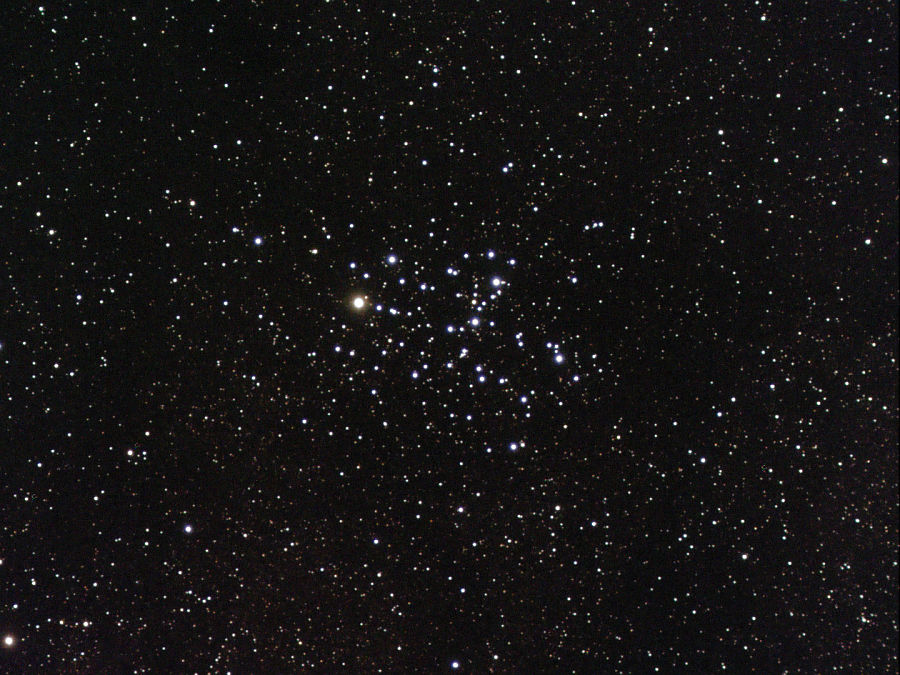
Ole Nielsen, CC BY-SA 2.5, via Wikimedia Commons

Starhopper, CC BY-SA 4.0, via Wikimedia Commons

At the very top center is the Star cluster M21.
Diagonally right below is the Trifid Nebula M20 and diagonally right below Sh2-28.
At lower center is the Lagoon Nebula M8 with the bright nebulae NGC 6526 (lower left) and the irregular area NGC 6533 (upper right) (separated by the slightly darker s-shaped area) and the star cluster NGC 6530 (left of the bright area).
To the left is the large nebula Sh2-29 with the nebula NGC 6559 (lower left) and the oblique planetary nebula Minkowski 1-41 (red dot), the star cluster IC 4685 (center), the nebula IC 1275 (upper left center), the nebula IC 1274 (above).
A bit above the blue star is the nebula IC 4684 and diagonally right above is the star cluster NGC 6546.
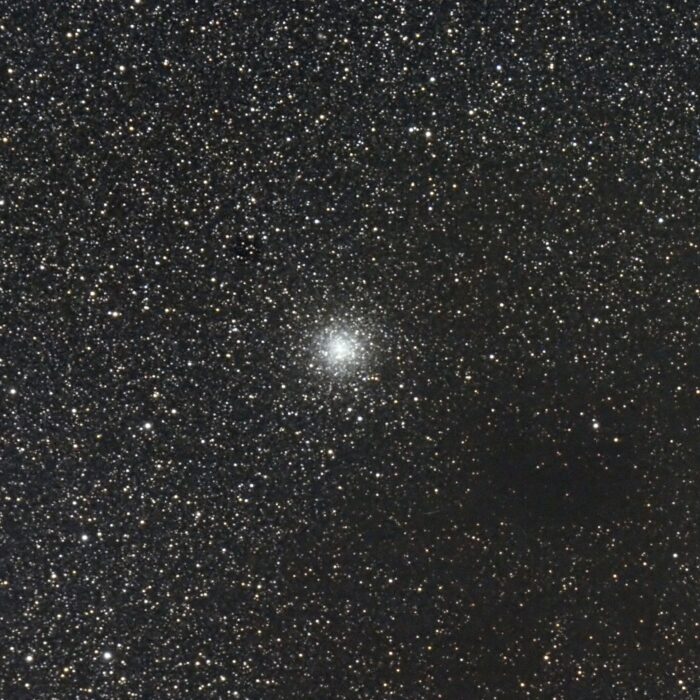
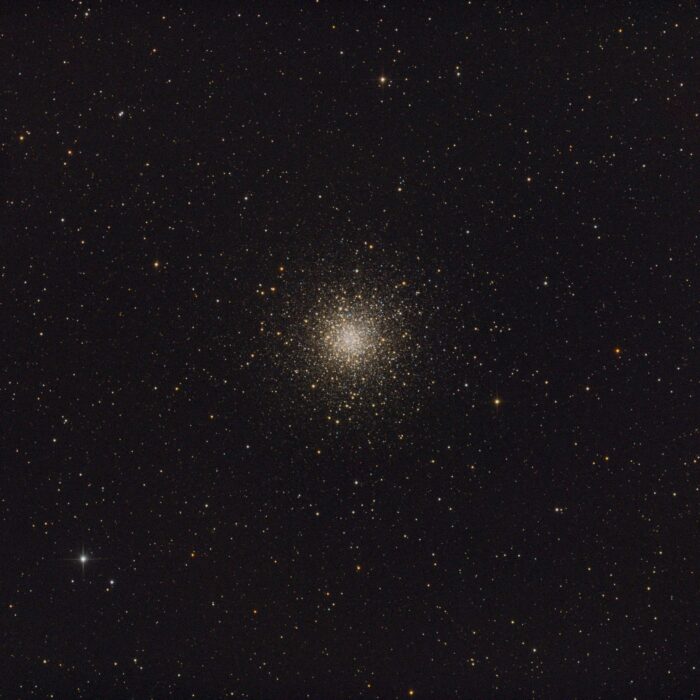
Starhopper, CC BY-SA 4.0, via Wikimedia Commons


Starhopper, CC BY-SA 4.0, via Wikimedia Commons

Starhopper, CC BY-SA 4.0, via Wikimedia Commons

Starhopper, CC BY-SA 4.0, via Wikimedia Commons

Starhopper, CC BY-SA 4.0, via Wikimedia Commons
In the star cluster M15 the planetary nebula Pease 1 is still hiding very small.

On the left the large Nebula is IC 4703 (Eagle Nebula: 70'x50' extent). It contains the open star cluster M16 (NGC 6611: 7' extent).
The right nebula is M17 with NGC 6618 (below (Gum 81a)) and the faint nebulae IC 4706 and IC 4707 (together Gum 81b) directly above it, and the small nebula Sh2-47 above it.
On the right edge, the star cluster M18 can be seen.
In the upper right corner is IC 4701.
Centered between M16 and M17 is RCW 161 and below it the HII area Gum 82.
Right below M16 is Sh2-48 and below M17 is RCW 159.
At the very bottom center of the edge is Sh2-50, and to its left is Sh2-53.

On the left the large Nebula is IC 4703 (Eagle Nebula: 70'x50' extent). It contains the open star cluster M16 (NGC 6611: 7' extent).
The right nebula is M17 with NGC 6618 (below (Gum 81a)) and the faint nebulae IC 4706 and IC 4707 (together Gum 81b) directly above it, and the small nebula Sh2-47 above it.
On the right edge, the star cluster M18 can be seen.
In the upper right corner is IC 4701.
Centered between M16 and M17 is RCW 161 and below it the HII area Gum 82.
Right below M16 is Sh2-48 and below M17 is RCW 159.
At the very bottom center of the edge is Sh2-50, and to its left is Sh2-53.

The star cluster in the center is M18.
The single star left above is vdB 121.
Right just before the edge is vdB 120.
Above the nebula belongs to IC 4701.


At the very top center is the Star cluster M21.
Diagonally right below is the Trifid Nebula M20 and diagonally right below Sh2-28.
At lower center is the Lagoon Nebula M8 with the bright nebulae NGC 6526 (lower left) and the irregular area NGC 6533 (upper right) (separated by the slightly darker s-shaped area) and the Star cluster NGC 6530 (left of the bright area).
To the left is the large nebula Sh2-29 with the nebula NGC 6559 (lower left) and the oblique planetary nebula Minkowski 1-41 (red dot), the star cluster IC 4685 (center), the nebula IC 1275 (upper left center), the nebula IC 1274 (above).
A bit above the blue star is the nebula IC 4684 and diagonally right above is the star cluster NGC 6546.

At the very top center is the Star cluster M21.
Diagonally right below is the Trifid Nebula M20 and diagonally right below Sh2-28.
At lower center is the Lagoon Nebula M8 with the bright nebulae NGC 6526 (lower left) and the irregular area NGC 6533 (upper right) (separated by the slightly darker s-shaped area) and the Star cluster NGC 6530 (left of the bright area).
To the left is the large nebula Sh2-29 with the nebula NGC 6559 (lower left) and the oblique planetary nebula Minkowski 1-41 (red dot), the star cluster IC 4685 (center), the nebula IC 1275 (upper left center), the nebula IC 1274 (above).
A bit above the blue star is the nebula IC 4684 and diagonally right above is the star cluster NGC 6546.


Starhopper, CC BY-SA 4.0, via Wikimedia Commons

The large star cloud at the top is M24, which contains the star cluster NGC 6603 at the top and SH2-39 diagonally below. The upper red nebula area is Sh2-41.
The dark nebula at the top is Barnard 92 and to the left you can see the lower end of Barnard 93.
The small red nebula is IC 1284 with the bright star HD 167815 in the center.
Directly above, the fainter red nebula, is IC 1283.
Just to the right are the two reflection nebulae NGC 6589 (the upper) and NGC 6590 (vdB 119) (the lower).
The nebula area on the lower right is Sh2-35.
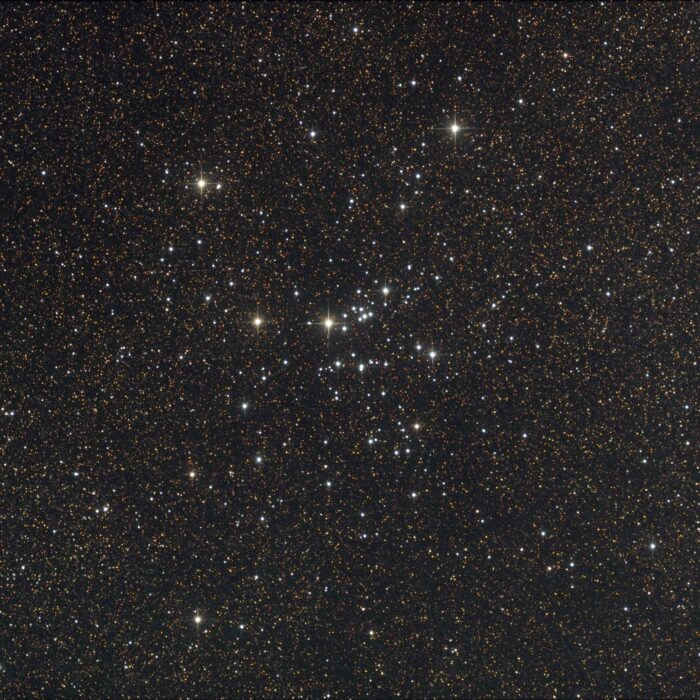
Starhopper, CC BY-SA 4.0, via Wikimedia Commons


Starhopper, CC BY-SA 4.0, via Wikimedia Commons

Starhopper, CC BY-SA 4.0, via Wikimedia Commons

Starhopper, CC BY-SA 4.0, via Wikimedia Commons
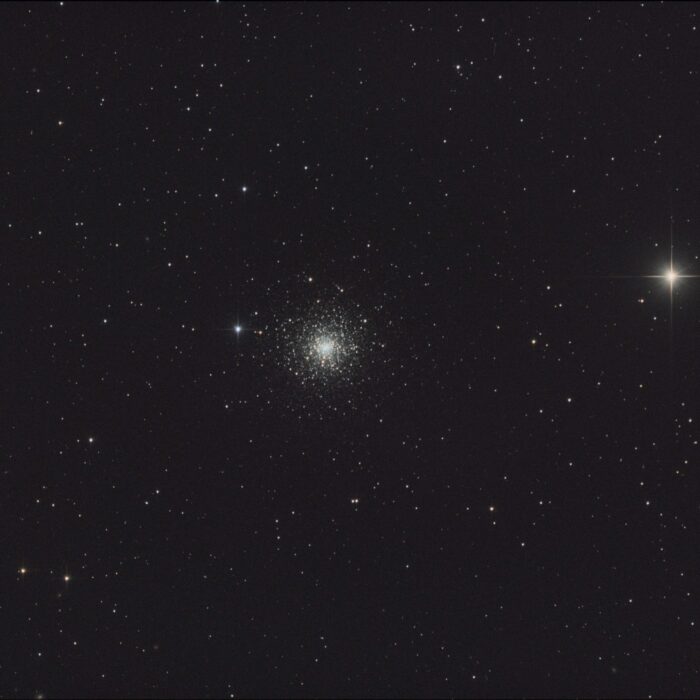
Starhopper, CC BY-SA 4.0, via Wikimedia Commons

Starhopper, CC BY-SA 4.0, via Wikimedia Commons

Starhopper, CC BY-SA 4.0, via Wikimedia Commons
The galaxy to the right of Andromeda in the image of M31.

The small red nebula area directly below the center is NGC 595.
In the upper right of the galaxy, the small nebula area NGC 604 can be seen.
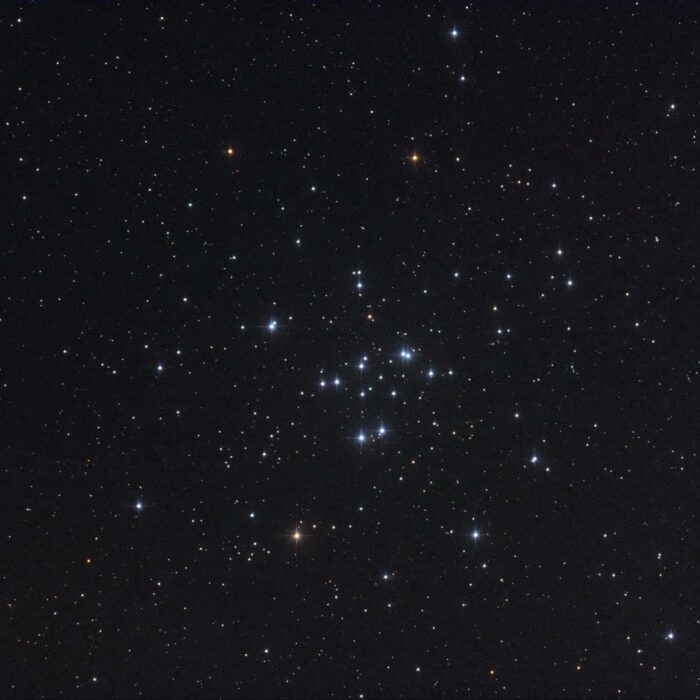
Starhopper, CC BY-SA 4.0, via Wikimedia Commons
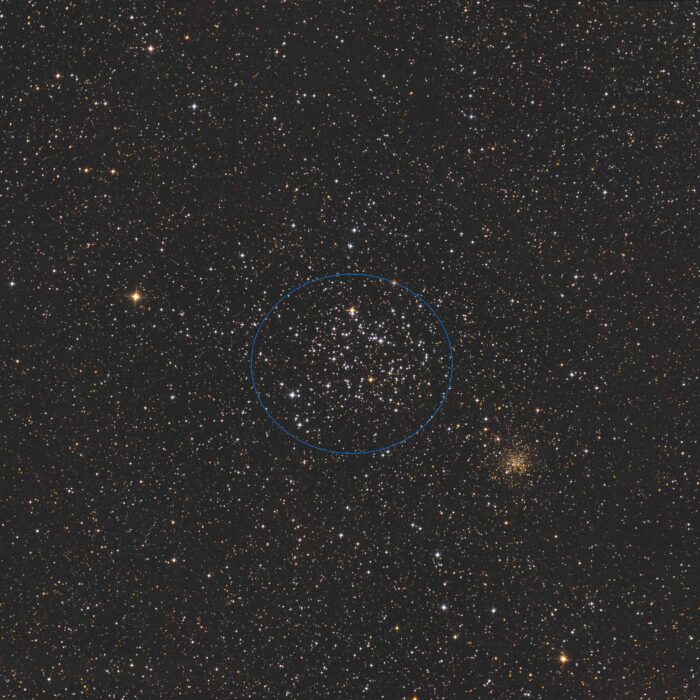
Starhopper, CC BY-SA 4.0, via Wikimedia Commons
In the center of the open cluster is M35.
The small star cluster right below is NGC 2158.

Starhopper, CC BY-SA 4.0, via Wikimedia Commons

Starhopper, CC BY-SA 4.0, via Wikimedia Commons

Starhopper, CC BY-SA 4.0, via Wikimedia Commons
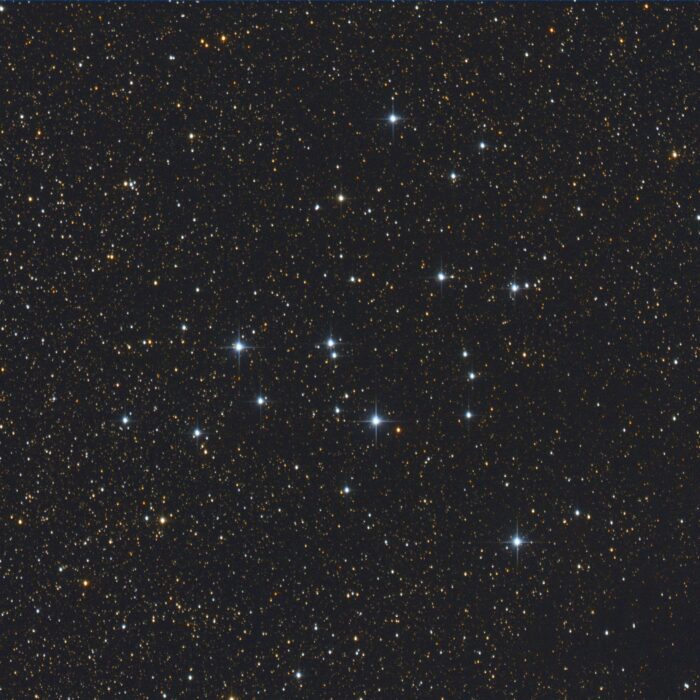
Starhopper, CC BY-SA 4.0, via Wikimedia Commons



Above the purple blue nebula is Sh2-279 (Running-Man Nebula) consisting of the star clusters NGC 1973 (upper blue star), NGC 1975 (right blue star) and NGC 1977 (the three stars next to each other).
Below the large nebula is the Orion Nebula (M42), where above the small protruding nebula is called M43.
To the left below M42, the star cluster, is NGC 1980.
To the right of Sh2-279 (Running-Man Nebula) is the reflection nebula IC 420 (vdB 44).
To the right of M42 is the Reflection Nebula vdB 42 and towards the left edge, at the level of the lower end of M42, is vdb 54.
At the lower edge NGC 1999 is still visible.

Above the purple blue nebula is Sh2-279 (Running-Man Nebula) consisting of the star clusters NGC 1973 (upper blue star), NGC 1975 (right blue star) and NGC 1977 (the three stars next to each other).
Below the large nebula is the Orion Nebula (M42), where above the small protruding nebula is called M43.
To the left below M42, the star cluster, is NGC 1980.
To the right of Sh2-279 (Running-Man Nebula) is the reflection nebula IC 420 (vdB 44).
To the right of M42 is the Reflection Nebula vdB 42 and towards the left edge, at the level of the lower end of M42, is vdb 54.
At the lower edge NGC 1999 is still visible.
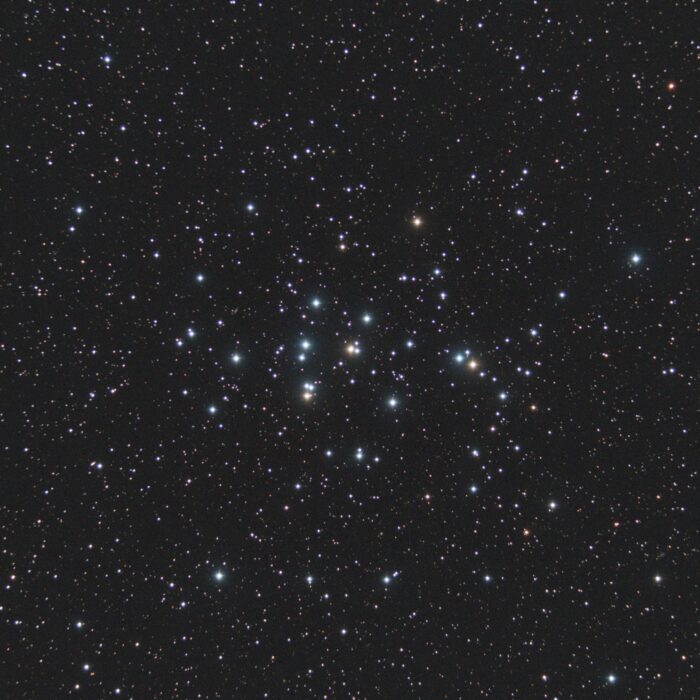

Starhopper, CC BY-SA 4.0, via Wikimedia Commons
The asterism is M45 (Pleiades).
The reflection nebula around the rightmost star (Electra) is called vdB 20, the one around the upper star (Maia) vdB 21, around the lower star (Merope) vdB 22 and the nebula around the star in the middle (Alcyone) vdB 23.
Near Merope there is a very small nebula known as Barnard's Merope Nebula (IC 349).
The complete nebular region around Merope is NGC 1435 (Merope Nebula).
The nebula around the upper star Maia is known as NGC 1432 (Maia Nebula).
The faint nebula above the middle star (Alcyone) is IC 1990.
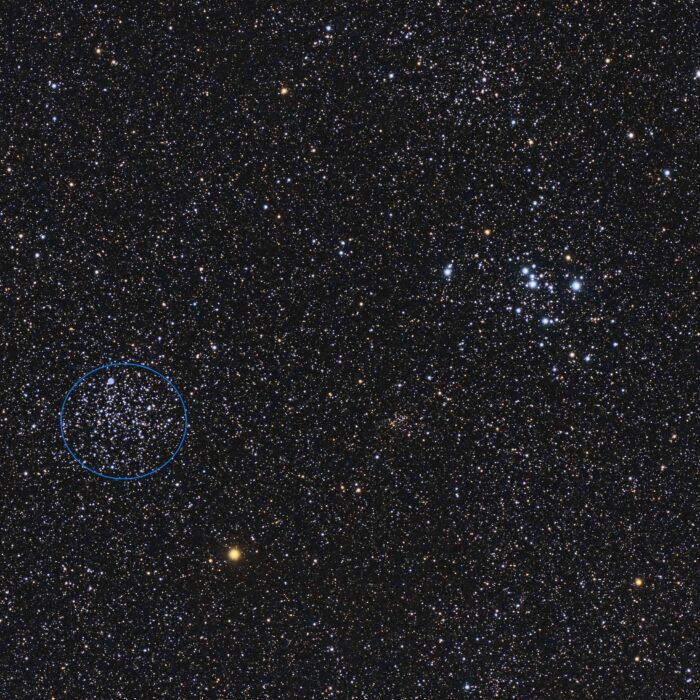
M46 is at the left edge of the image.
M47 is on the right.
The planetary nebula NGC 2438 (small blue nebula) is in the foreground and does not belong to M46. (According to recent investigations, it could be that the planetary nebula interferes with the star cluster after all and has the same distance. (https://arxiv.org/pdf/0710.2900.pdf)
Just above M46 is the planetary nebula Minkowski 1-18 (visible only with high image magnification).
Between M46 and M47 (slightly below) is the open cluster NGC 2425.
Above M47 is the open cluster NGC 2423.
In the lower right corner is the star cluster NGC 2414.

M46 is at the left edge of the image.
M47 is on the right.
The planetary nebula NGC 2438 (small blue nebula) is in the foreground and does not belong to M46. (According to recent investigations, it could be that the planetary nebula interferes with the star cluster after all and has the same distance. (https://arxiv.org/pdf/0710.2900.pdf)
Just above M46 is the planetary nebula Minkowski 1-18 (visible only with high image magnification).
Between M46 and M47 (slightly below) is the open cluster NGC 2425.
Above M47 is the open cluster NGC 2423.
In the lower right corner is the star cluster NGC 2414.


Together with the irregular galaxy UGC 7636 (diagonally left below the spot directly next to the star) M49 forms the entry Arp 134.

Starhopper, CC BY-SA 4.0, via Wikimedia Commons

Giuseppe Donatiello from Oria (Brindisi), Italy, CC0, via Wikimedia Commons
The large knot at the end of one spiral arm is the irregular galaxy NGC 5195.

On the far left is M52.
Right below is the star cluster Czernik 43.
In the upper right is the Bubble Nebula NGC 7635.
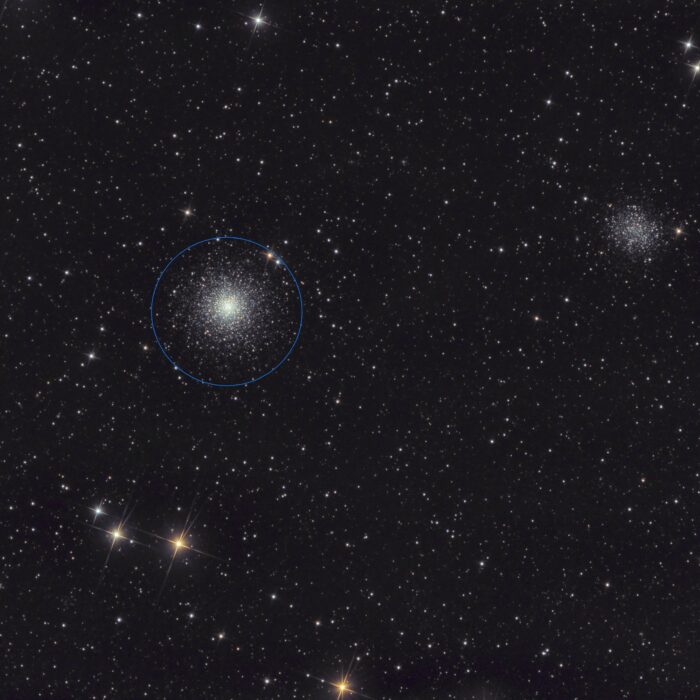
On the right of the star cluster is NGC 5053.

Starhopper, CC BY-SA 4.0, via Wikimedia Commons

Starhopper, CC BY-SA 4.0, via Wikimedia Commons

Starhopper, CC BY-SA 4.0, via Wikimedia Commons

M57 is visible in the center of the image.
Diagonally right below is the spiral galaxy IC 1296.


Ole Nielsen, CC BY-SA 2.5, via Wikimedia Commons

On the lower left is M60. Above it on the right is NGC 4647.
Together they form the galaxy pair Arp 116.

Oblique top left is the barred spiral galaxy NGC 4301.
Oblique top right is the galaxy NGC 4292.
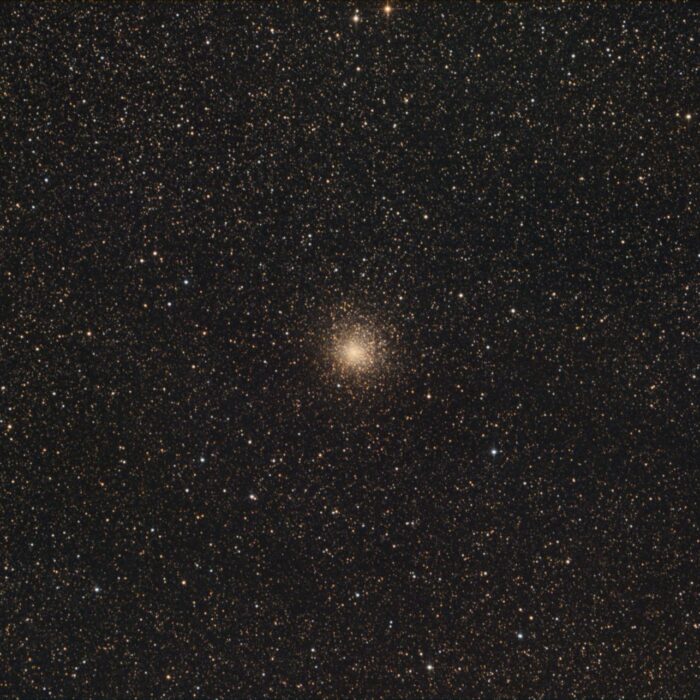


Starhopper, CC BY-SA 4.0, via Wikimedia Commons

Marekmazuch, CC BY-SA 4.0, via Wikimedia Commons
On the right is NGC 3628.
On the left is M66 and below it M65.
The three galaxies are called the Leo Triplet (Arp 317).

Marekmazuch, CC BY-SA 4.0, via Wikimedia Commons
On the right is NGC 3628.
On the left is M66 and below it M65.
The three galaxies are called the Leo Triplet (Arp 317).

Starhopper, CC BY-SA 4.0, via Wikimedia Commons
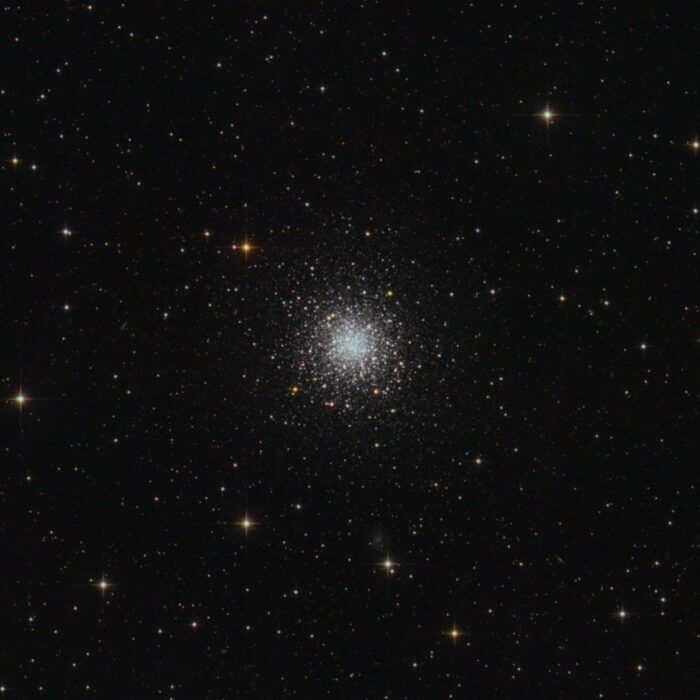
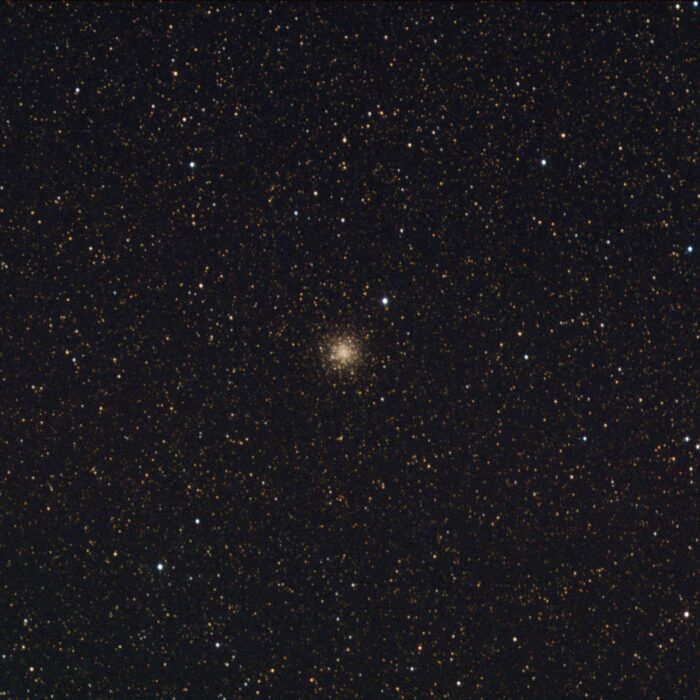
Starhopper, CC BY-SA 4.0, via Wikimedia Commons


Starhopper, CC BY-SA 4.0, via Wikimedia Commons




Starhopper, CC BY-SA 4.0, via Wikimedia Commons


Above is the galaxy NGC 1055.

In the center the large reflection nebula is M78.
Adjacent to it on the right is the reflection nebula NGC 2064.
Diagonally above on the left is NGC 2067.
To the left of the reflection nebula is NGC 2071.



Keesscherer, CC BY-SA 4.0, via Wikimedia Commons
In the center is M81.
On the right is M82.
The small galaxy in the upper left is NGC 3077.

Keesscherer, CC BY-SA 4.0, via Wikimedia Commons
In the center is M81.
On the right is M82.
The small galaxy in the upper left is NGC 3077.


Above M86 is the Galaxie NGC 4402.
Between M86 and M84 a bit below is the glaxia NGC 4387.
Below M84 almost at the edge is the elliptical galaxy IC 3303.
In the lower left corner there is the outlier of NGC 4425.

To the left is the galaxy NGC 4394.

Above M86 is the Galaxie NGC 4402.
Between M86 and M84 a bit below is the glaxia NGC 4387.
Below M84 almost at the edge is the elliptical galaxy IC 3303.
In the lower left corner there is the outlier of NGC 4425.

M87 has a jet to the side, which is visible in different waves.
It is the galaxy where a photo of a black hole was first captured.



Above M90 is the galaxy IC 3583.

Jschulman555, CC BY-SA 4.0, via Wikimedia Commons
Above you can see the galaxy PGC 169575.
Directly below M91 is the galaxy PGC 169578.
On some images often the galaxy PGC 41978 can be seen in the lower left corner, which is not shown here anymore.



Starhopper, CC BY-SA 4.0, via Wikimedia Commons

Anttler at English Wikipedia, Public domain, via Wikimedia Commons
The galaxy on the left is M95.
On the right is M96.

Anttler at English Wikipedia, Public domain, via Wikimedia Commons
The galaxy on the left is M95.
On the right is M96.


Below in extension of M98 is the galaxy NGC 4186.
Diagonally right below M98 (the faint spot) is the galaxy NGC 4192A and just above this spot is even fainter VCC 79.


The upper galaxy is M100.
The small one diagonally to the right below it is NGC 4312.

Keesscherer, CC BY-SA 4.0, via Wikimedia Commons
The galaxy on the lower right is the Fire Wheel Galaxy M101.
In the upper left corner is NGC 5474.




Below is M105.
Diagonally right above you can see the galaxy NGC 3384 (NGC 3371).
Diagonally left above you can see the galaxy NGC 3389 (NGC 3373).

Hewholooks, CC BY-SA 3.0, via Wikimedia Commons
On the far left is M106.
The small galaxy next to it is NGC 4248.
On the lower right is the galaxy NGC 4217.

Starhopper, CC BY-SA 4.0, via Wikimedia Commons

Starhopper, CC BY-SA 4.0, via Wikimedia Commons

On the left in extension of M109 is UGC 6969.
Below is UGC 6940.
And at the very bottom of the image (between center and right edge) a part of UGC 6923 shimmers.

Starhopper, CC BY-SA 4.0, via Wikimedia Commons
The galaxy to the left of Andromeda in the image of M31.